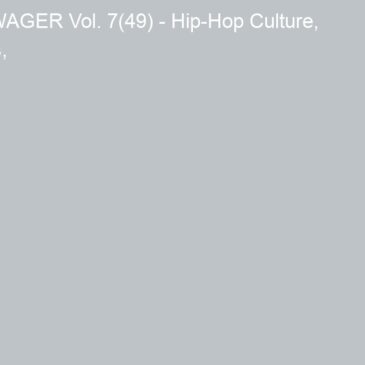This week The WAGER announces the release of the third volume of the Harvard Medical School Division on Addictions web initiative, Addictions & the Humanities. The aim of this initiative is to create a public forum to discuss literature, art, music, and performing arts related to addictions, including pathological gambling. Science and technology will always help us understand addiction, but truth also may be revealed by examining art. We will publish new issues of Addictions in the Humanities quarterly. The next issue will be available in January. Below is a segment of an article from the third issue of Addictions & The Humanities that uses music to understand drug use and abuse among minority groups. Similarly our understanding of pathological gambling might benefit from this examination.
Our culture’s fascination with drugs can be traced back through art. For example, musicians in the past have carefully documented our collective attitude towards the use, abuse, and misuse of drugs. Jazz, blues, and rock and roll songs are full of references to drug use. Nowadays, rap and hip-hop are topping the charts; much like rock did 20 years ago. Many hip-hop artists rap about positive things such as education, political awareness, social equality, and surviving in a society that is discriminatory. In fact, even the mention of drugs in early rap music was taboo (Beats, Booze, and Blunts: Drugs in the rap industry, 2002). Today, however, it is almost impossible to tune in to the radio and find a rap or hip-hop album that doesn’t contain some reference to the use of drugs, alcohol, or gambling. After all, what sells better than alcohol, drugs and other vices. This article explores drug language in hip-hop music, our culture’s mixed messages about drug consumption, and some horrifying facts about racism within our criminal justice system.
One of the best and most popular artists today is Missy “Misdemeanor” Elliott, who has this week’s number 1 selling song in the nation, “Work It”:
“If you’re a fly gal,
then get your nails done
Get a pedicure, get your hair did
Boy lift it up, lets make a toasta
Lets get drunk, its gon bring us closa”
Her new album, “Under Construction” makes a strong case against violence among (and between) rap artists, and female empowerment. Although the message is a positive one, it is still laced with a certain glorification of substance use which can be problematic if misinterpreted. If pressed on the subject, most hip-hop artists will point out that they are simply writing about the social and economic reality which they experience every day (Beats, Booze, and Blunts: Drugs in the rap industry, 2002). Rightly so: the barometer cannot be blamed for the storm. Hollywood, television, and marketing campaigns similarly use drugs as a medium and some would argue, glamorize drug use. However, there seems to be a disparity in the way society responds to the mention of drugs by hip-hop artists and Hollywood. While Hollywood films and marketing campaigns are lauded for “real and honest” portrayals of drug use, hip-hop artists continue to be demonized when they mention drugs in their songs.
Comments on this article can be addressed to Gabriel Caro.
References
American Indians are Violent Crime Victims at Double the Rate of the General Population (1999). U.S. Department of Justice, Bureau of Justice Statistics.
Beats, Booze, and Blunts: Drugs in the rap industry (2002). Mr. Blunt. Retrieved November 15, 2002, from the World Wide Web: www.mrblunt.com/?sec=culture&page=rap_weed.
Couriel, J. D. (2000). Keep It Real: Recasting the drug debate in terms of accountability and opportunity. The Harvard Political Review.
Hill, L. (2002). MTV Unplugged Vol. 2. New York: Columbia Records Sony Music Entertainment.
Kitwana, B. (2002). The hip hop generation: The crisis in African American Culture. New York: Basic.
Public Enemy. (1994). Muse Sick-N-Hour Mess Age: Def Jam.
Race and the Criminal Justice System (2002). Drug Policy Alliance. Retrieved December 1, 2002, from the World Wide Web: http://www.drugpolicy.org/race/criminaljust/.
Watch, H. R. (2000). Human Rights Watch Report: Punishment and Prejudice: Racial Disparities in the Criminal Justice System. Human Rights Watch. Retrieved December 1, 2002, from the World Wide Web: http://www.hrw.org/reports/2000/usa/index.htm.




